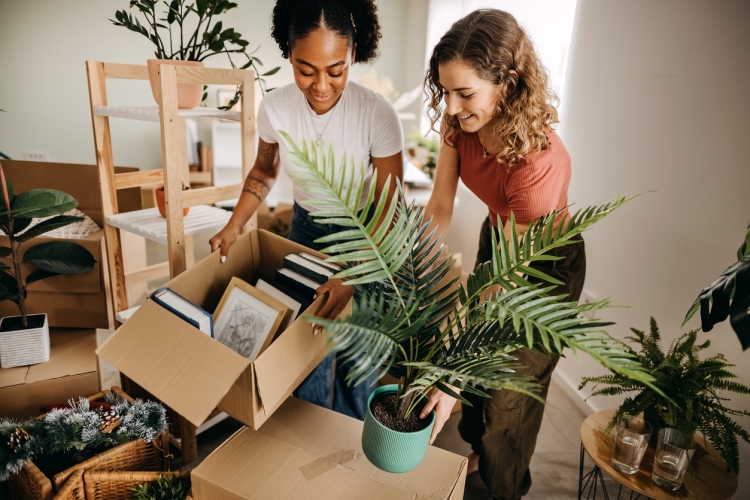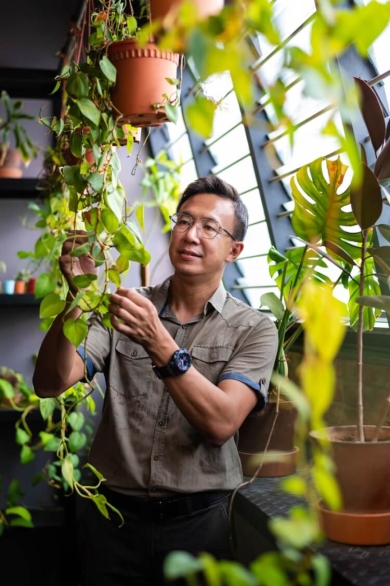If you’re a plant parent, you feel as though your houseplants are part of the family. Leaving them behind during a move is unthinkable – and you don’t want them to suffer (or even die) during transportation.
While your movers are not permitted to transport your plants to your new home, here are some tips on how you can keep your plants happy when you move them – either across town or across the nation.
Moving with plants
Plant experts say that plants feel the stress of moving just like we do. So it’s essential to make their trip as smooth as possible. The ideal situation is moving your plants in the vehicle you’re riding in so you can keep an eye on them, however this isn’t always possible or practical.
It is possible to move plants through air freight, however the airline won’t provide any extra care for them. They’ll be treated like any other cargo (which, sometimes, isn’t treated very gently).
Two of the most important travel tips for plants are: 1) Make sure they stay upright, and 2) Keep them out of high temperatures as best you can.
Tips and tricks
Here are a few more tips and tricks on how to move with plants and make sure they stay as happy as possible:

1. Package them well
You want your plants to arrive at your destination in one piece, and they need secure packaging in order to do that.
Every portion of the plant should be protected while still allowing the plant to stay hydrated. Dehydration is a big problem during a move. To prevent dehydration, give your plants a thorough soak a few days before the big day. Soil should be partially damp on the day of the move. Keep water on hand during transportation so you can supplement any plant that looks thirsty.
2. Wrap the foliage
Newspaper is a great wrapping tool because it allows your plants to breathe. If you have a plant with leafy foliage, it’s in danger of being flattened during the move. Newspapers secured with tape can help prevent this from happening. For best results, put all of your wrapped, leafy plants together in a tall box with a sturdy lid. They’ll enjoy this humid environment, and it will keep them safe during transportation.
3. Pack plants together according to type
It’s a well-known fact that cacti don’t always play well with others. To prevent damage to more vulnerable plants, pack cacti and succulents in their own box and open the lid as soon as you arrive. They’ll need a lot of sunlight to recover from the journey.
4. Use labels
Keep the lids open until the last minute so your plants can breathe and soak up the sun, then label your boxes so you don’t lose track of which plant is where when you unpack.
You can also line moving boxes with plastic bags, just in case your plants leak. The last thing you want is for your cardboard boxes to disintegrate and your potted friends to fall out and break.
Recovering from the move
Moving can be a shock for houseplants. Just like you, they will need time and patience as they adjust to their new environment.
To help your plants get used to their new home, you can:
 Open boxes ASAP. Plants cannot thrive for long in a closed box. They will need the fresh air and sunlight in order to bounce back.
Open boxes ASAP. Plants cannot thrive for long in a closed box. They will need the fresh air and sunlight in order to bounce back.- Place your plants in areas they enjoy. Mist leafy plants to help rebuild their strength, place the succulents in direct sunlight, and put the rainforest natives in light shade.
- Pare away flowers if you need to. Removing flowers or foliage that look dead will help your plant focus its energy on recovery and regrowth.
- Give them a little extra. Especially if you moved during the summer, boosting your plants’ health with some houseplant fertilizer can be a game-changer.
- Be patient. It may take your houseplants some time to adjust completely to a new environment – weeks or even months. Be patient and try to remember that they are adapting in the same way you are.
You and your plants’ new home
For some people, a house doesn’t feel like a home without plants. By using these tips, you can make sure your plants make the trip in one piece, and you can start enjoying your new home with them.


